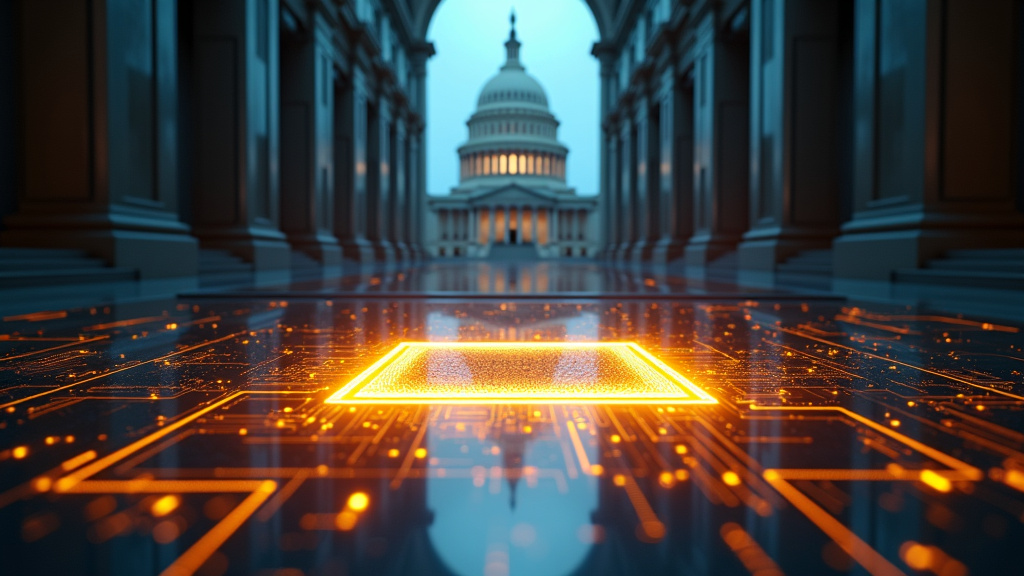US Government Takes 9.9% Stake in Intel for $8.9 Billion in Landmark Trump Administration Deal
WASHINGTON D.C. – August 22, 2025 – In an unprecedented move that signals a new era of government intervention in the technology sector, the United States government has agreed to acquire a 9.9% stake in chip giant Intel Corporation for $8.9 billion. The deal, announced by President Donald Trump, converts previously awarded government grants into an equity share, making the U.S. one of Intel’s largest shareholders. This landmark transaction is poised to reshape the relationship between government and private industry, particularly within the critical semiconductor technology landscape.
The Historic Investment Details
The agreement will see the U.S. government purchase 433.3 million shares of Intel common stock at $20.47 per share, a price slightly below Intel’s closing stock value on the day of the announcement. The substantial investment is primarily funded by $5.7 billion in remaining grants previously allocated to Intel under the U.S. CHIPS and Science Act. An additional $3.2 billion comes from the Secure Enclave program, which focuses on U.S. government chip production for national security purposes. Combined with $2.2 billion in CHIPS grants Intel had already received, the total federal investment in the company now stands at $11.1 billion. Importantly, the government’s stake will be passive, devoid of any board representation or governance rights, and the U.S. has agreed to vote with Intel’s Board of Directors on most shareholder matters.
Trump’s Pivotal Role and Remarks
President Trump himself announced the deal, framing it as a strategic victory and a testament to his administration’s focus on bolstering American manufacturing. The agreement follows a high-profile meeting between Trump and Intel CEO Lip-Bu Tan, which occurred just days after Trump had publicly called for Tan’s resignation over concerns regarding his past ties to Chinese firms. During the announcement, Trump recounted his conversation with Tan, stating, “I said, I think it would be good having the United States as your partner. He agreed, and they’ve agreed to do it.” He further elaborated on the meeting’s outcome, saying, “He walked in wanting to keep his job, and he ended up giving us $10 billion for the United States.” Commerce Secretary Howard Lutnick confirmed the deal on X (formerly Twitter), calling it “fair to Intel and fair to the American People.”
Intel’s Turnaround Challenge and CEO’s Mandate
The investment arrives at a critical juncture for Intel. The company has been grappling with significant financial headwinds, reporting an $18.8 billion loss in 2024 and experiencing weak cash flow since 2021. Intel’s foundry business, in particular, has struggled to gain traction against more dominant rivals like TSMC, Nvidia, and AMD. Lip-Bu Tan, who assumed the role of Intel’s CEO in March 2025, faces the immense task of orchestrating a turnaround for the once-dominant chipmaker. This government backing, analysts suggest, could provide crucial financial stability and strategic support as Tan navigates the company through this challenging period. The deal also includes a five-year warrant allowing the U.S. government to purchase an additional 5% stake if Intel relinquishes majority control of its foundry business.
Strategic Imperatives and Broader Context
The U.S. government’s investment in Intel aligns with the broader national strategy, amplified by the CHIPS and Science Act, to onshore semiconductor manufacturing and reduce reliance on overseas supply chains. This initiative is viewed as vital for both economic prosperity and national security. While the Trump administration had previously criticized aspects of the CHIPS Act funding, this move indicates a strategy to leverage existing grants for direct government equity, potentially seeking a financial return on taxpayer investment. The deal is part of a series of unusual agreements by the Trump administration involving technology companies, including arrangements with Nvidia and AMD concerning sales to China.
Industry Reaction and Future Outlook
The transaction has drawn a spectrum of reactions, with some critics labeling it a departure from free-market principles. However, proponents argue it’s a necessary step to secure America’s technological leadership. Intel, for its part, expressed gratitude for the administration’s confidence, with CEO Lip-Bu Tan stating, “President Trump’s focus on U.S. chip manufacturing is driving historic investments in a vital industry… We are grateful for the confidence the President and the Administration have placed in Intel.” The news signals a complex future for Intel, one that is now deeply intertwined with government strategic interests, positioning the company as a key player in the ongoing global technology race. This development is undoubtedly one of the most significant trending stories in the tech industry today, with far-reaching implications for the semiconductor sector and beyond.





